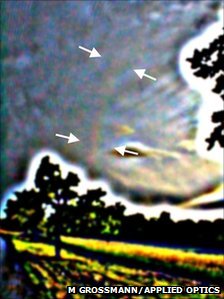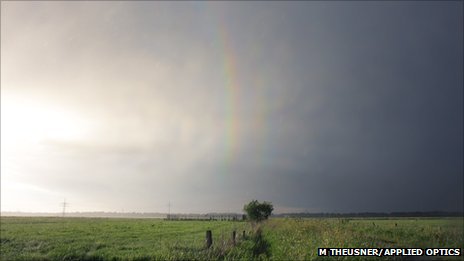Usually when you go hunting for rainbows, you turn your back to the sun. And if you’re lucky, especially if the clouds are dark enough, you get not one but two richly hued bows.

Until this year, that was all there was to the pot of gold that enthusiasts of optical phenomena could hope for. Then last year Raymond Lee, a U.S. Naval Academy meteorologist, went a step further from his classic studies of rainbows and light scattering in the atmosphere to predict that a third (tertiary), and even a fourth (quaternary) bows are possible if you look just 40 degrees from a bright sun surrounded by dark clouds.
Lee’s historical survey yielded just four potential observations of these elusive bows in more than two centuries of records. They’re barely visible, and only if you know where to look.
All of a sudden now, thanks to Lee’s guidance, two more observations have been added by rainbow chasers in Germany. They published their observations in a special issue of Applied Optics last week. To preserve the weakly lit bows on camera required special post image processing. Nonetheless we know gold when we see it. No longer is it enough to turn your back on the Sun.
